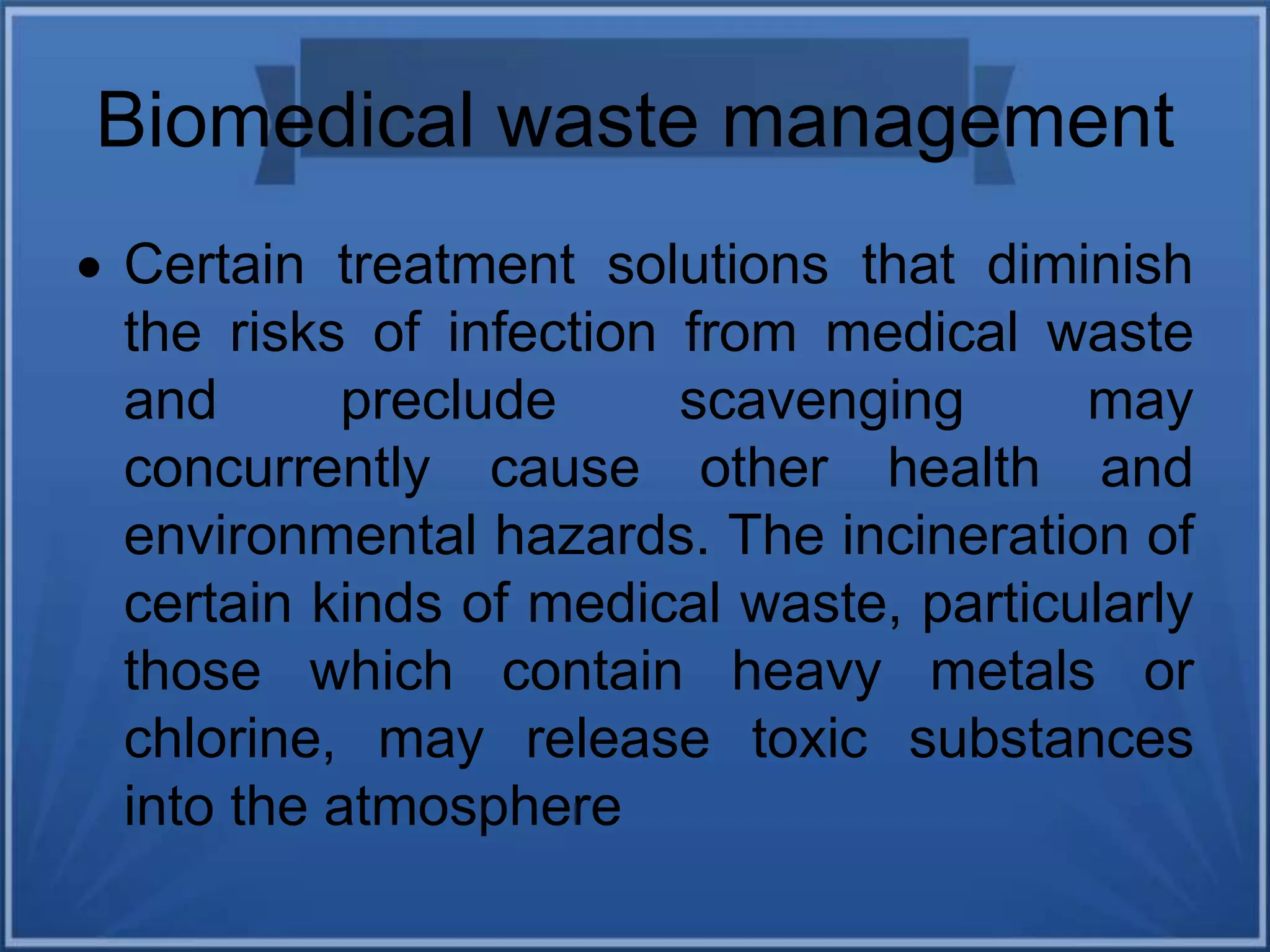Biomedical waste includes materials from healthcare facilities like used needles, body parts, and chemicals. It is categorized as infectious, pathological, or sharps waste. Infectious waste may contain pathogens, pathological waste includes tissues and organs, and sharps can puncture skin. Common biomedical waste treatment methods include incineration, chemical disinfection, wet thermal treatment, microwave irradiation, and land disposal. Each method has advantages in destroying pathogens but also disadvantages like high costs, emissions, or inability to treat all waste types. Proper waste management aims to reduce risks to health and the environment through practices like segregated collection, transportation routes, and environmentally-safe disposal.





















